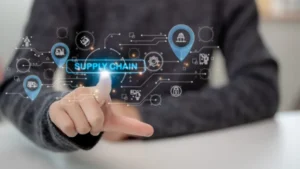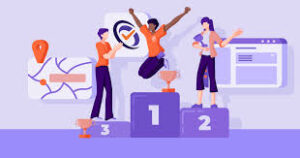In the present-ever changing labor environment, the need for holistic skill and competency management has never been this pressing. Businesses have to adopt change that is competitive as industries evolve and technologies advance. This is where AG5 Training matrix software comes in, with its revolutionary approach to skills and competencies management that will not only make organizations more efficient, but also more agile.
Understanding AG5: A Synopsis
AG5 is much more than just software; it’s an entire platform built for automating skill and competence management processes. Employing advanced forms of technology such as artificial intelligence (AI) and machine learning (ML), the system offers businesses matchless insights into their employees’ capabilities. AG5 has breathed new life into personnel management by identifying deficiencies in skills and enabling targeted training.
By providing tools that facilitate employee skills and competencies management, AG5 caters to today’s evolving demands of modern organizations. Conventional approaches are often based on static databases that require constant manual updates which may soon become obsolete. Therefore, through a dynamic approach to skill analysis at any given moment, AG5 provides timely updates about workforce abilities ensuring quicker responses whenever there are changes in business situations.
Moreover, AG5’s AI-driven analytics provide deep insights into workforce trends, helping organizations to predict future needs and plan accordingly. This information can be used by corporations when making decisions impacting hiring needs, training sessions or business planning thus resulting in a flexible organization.
Real-Time Skill Mapping
One significant feature of AG5 is its ability to create real-time skill maps both for individual members of a team as well as whole teams at once. More often than not, traditional matrices tend not be dynamic enough as they quickly get outdated thus aren’t reliable gauges for current labor abilities. Traditional matrices cannot deal with this challenge since they rarely undergo regular updating unlike those developed by AG5 which reflect actual work performance, completed trainings and other important points.
In today’s fast-paced world of work, skill relevance may change quickly due to technological advancements or shifts in demand. AG5 overcomes this problem by continuously updating its maps. This real-time mechanism is driven by data collected from various sources like employees’ direct input, evaluations, and ongoing training exercises. The skill profiles are then updated so as to reflect the current ability levels of an employee.
Real-time skill mapping enables organizations to have an accurate and up-to-date picture of their employees’ capabilities. In addition, such information proves crucial when it comes to taking strategic decisions on project assignments, promotions and personnel planning. On the other hand, employers can note any emerging skills within their teams thereby enabling proactive talent management, thus aligning their workforce with ever changing business requirements.
For example, if a company needs a team for a specific project possessing some skills only AG5 will be able to identify these people who have the respective competences… This saves time while ensuring that only the most suitable persons are assigned roles which in turn makes it more likely that the project will succeed… Furthermore; real-time mapping of skills helps identify where there is a gap in abilities hence allowing timely interventions through focused training efforts.
Adaptive Learning And Development
In the modern business environment, employees must undergo continuous learning to stay relevant in a constantly changing industry landscape. This is what AG5 solves with its adaptive learning and development capabilities.
It evaluates competences of both individuals and teams in order to determine training needs.
Adaptive learning tailors educational experiences for each learner’s unique requirements. By using AI, AG5 analyzes performance records and provides customized suggestions on possible learning paths. Thus, it ensures that most necessary trainings are received by employees just in time they need them and these courses match their individual style of acquiring information.
AG5 may be employed by organizations to develop custom-built training programs aimed at addressing specific skills gaps. The flexibility of this platform means that training can be customized to individuals’ requirements thereby increasing the effectiveness of learning processes. This has dual benefits; while it facilitates faster acquisition of new skills, an organizational culture that encourages life-long education is also built through such an approach.
For example, if there is an employee who cannot work with certain software tools effectively, AG5 may recommend appropriate training modules to help him or her overcome such limitations in skill set. Similarly, a team on the verge of approaching a project which requires different skills than what they possess may have group training sessions facilitated by AG5 to prepare them adequately.
Adaptive learning brings apart from acquiring skills only. It instills a never-ending improvement culture whereby workers are encouraged to enhance their proficiency levels frequently. In turn, not only does this upscale individual output but also it contributes towards collective advancement as well as adaptability on the whole corporation further still when companies invest in developing staffs; they raise their morale and job contentment hence experiencing less labor turnover thus having engaged employees.
Data-Informed Decision-Making
AG5 enables informed decisions making through data-driven insights. The vast quantity of data collected through this system includes performance indicators, training records or project outcomes among others sources available on the platform.
It equips executives with a wide range of data that can help them identify trends, project future skill requirements and make strategic decisions in line with the organization’s objectives.
The effective use of data is a competitive advantage in today’s business world. AG5, however, addresses this through its analytic capacity which enables organizations to go beyond instincts and make decision based on evidence. For instance, AG5 can examine training records and performance information to identify effective training programs, as well as it can show where additional investment may be needed.
AG5’s analytics capabilities assist businesses in improving resource allocation, identifying high performers and closing skills gaps. Therefore, using this people management strategy that relies purely on data makes enterprises adaptable to change hence enhancing their ability to succeed in the long-run.
Find an example where budgeting for employee training annually is taking place within a firm. Such indications from AG5 will inform about what skills are in demand at present and which areas might need extra funding sometime soon. As a result, the training budget of an organization may be allocated more efficiently since valuable resources would not be wasted on some programs when there are others that have major impacts.
Additionally, predictive analytics by AG5 may enable companies know what skills they will require going forward basing their predictions on both industrial trend and internal workforce information. Consequently, proactive plans are put into actions so as to ensure that organizational readiness is maintained under any changes concerning business environment
Effortless Integration
AG5 links smoothly with the current HR and personnel administration systems to enhance its impact. This ensures that firms using the platform have a seamless switch. By connecting to other tools and databases, AG5 becomes a central place for skill and competency data, thus reducing silos and enhancing inter-departmental interactions.
Integration is an important element of new software implementation. AG5 is designed to work well with various existing systems like HR management software, learning management systems, and performance appraisal tools. Therefore, this allows companies to leverage their past investments thereby improving their proficiency through AG5.
This means for example that if a company uses an established HR management system then it can integrate AG5 so as to improve its functionalities without disrupting ongoing processes. The bi-directional flow of information between the HR system and AG5 helps in having consistent skill profiles built by pulling data from the HR system back into it. Consequently, this ensures uniformity and accuracy throughout all platforms.
Furthermore, there are numerous sources of employee skills and competencies that can be integrated by AG5 enabling a holistic view of these two concepts. Consequentially, this integration eliminates silos that prevent proper communication between departments. Organizations can streamline processes such as skill management when they have one platform where everything is put together which reduces administrative overheads while increasing overall efficiency.






Be First to Comment